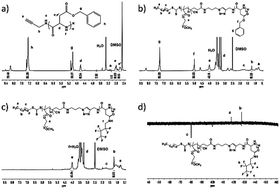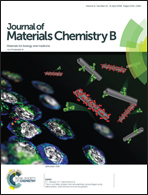Oxygen self-sufficient fluorinated polypeptide nanoparticles for NIR imaging-guided enhanced photodynamic therapy†
Abstract
A major hindrance for photodynamic therapy (PDT) to achieve higher efficiency is the hypoxia environment in the tumor area and the PDT-induced continuous consumption of molecular oxygen. Oxygen self-sufficient fluorinated polypeptide nanoparticles have been synthesized via the loading of a NIR photosensitizer (BODIPY-Br2) into a water-dispersible drug delivery system for high efficiency PDT. As a result of the higher oxygen capacity and 1O2 lifetime enhancement of perfluorocarbon, the whole PDT agent demonstrated higher oxygen uptake and enhanced singlet oxygen production, showing the potential to improve the PDT efficacy in hypoxia tumor environments after light irradiation. In vitro studies including cellular uptake and PDT efficiency were evaluated using hepatocellular carcinoma HepG2 cells as models, and the enhanced PDT efficiency of fluorinated polypeptide DDS with higher O2 content was measured on a tumor-bearing BALB/c mice model by in vivo experiments. Results demonstrated that the fluorinated polypeptide platform plays a significant role as an effective delivery vehicle for small molecule photosensitizers while increasing the generation of reactive oxygen species (ROS) and having higher cytotoxicity to cancer cells, especially in the hypoxia environment. In addition, the BODIPY-Br2 photosensitizer worked for both PDT and imaging in the NIR region making it a potential theranostic for cancer treatment.



 Please wait while we load your content...
Please wait while we load your content...